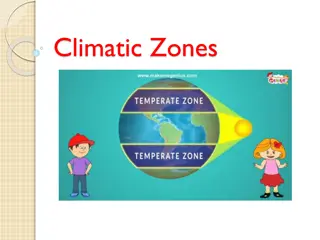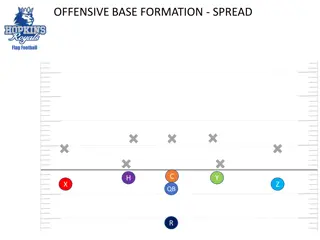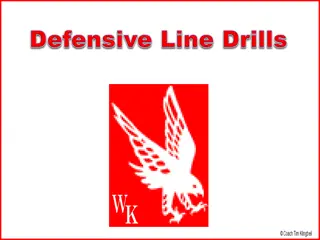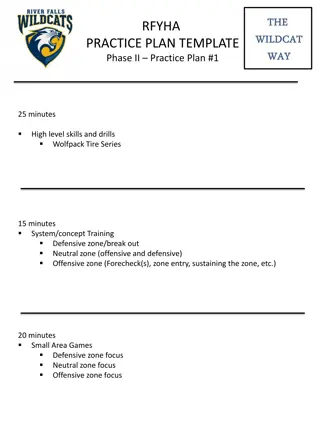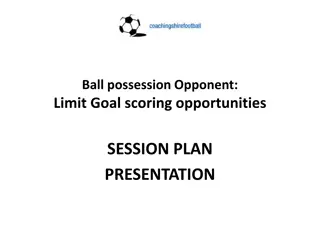Evaluating Defensive Zone Play with Microstats
Analyze defensive zone performance by exploring microstats in the context of competitive sports. Gain insights into individual and team strategies, positioning, and decision-making on the ice or field. Enhance your understanding of key performance indicators and refine your approach to defensive gameplay through a data-driven lens.
Download Presentation

Please find below an Image/Link to download the presentation.
The content on the website is provided AS IS for your information and personal use only. It may not be sold, licensed, or shared on other websites without obtaining consent from the author.If you encounter any issues during the download, it is possible that the publisher has removed the file from their server.
You are allowed to download the files provided on this website for personal or commercial use, subject to the condition that they are used lawfully. All files are the property of their respective owners.
The content on the website is provided AS IS for your information and personal use only. It may not be sold, licensed, or shared on other websites without obtaining consent from the author.
E N D
Presentation Transcript
Evaluating Defensive Zone Play with Microstats Jessica Schmidt
ZONE EXIT AND TRANSITION DATA OVERVIEW
CHANGES FOR 2015-2016 SEASON Breaking down pressure into four different categories. Adding primary and secondary assists to exit attempts. Incorporate transition data as a part of zone exits rather than treating them as a separate entity. Track the impact of score effects, line combinations, and defensive pairings.
HOW DO PLAYERS PERFORM UNDER DIFFERENT PRESSURE SITUATIONS? Category 1 Immediate forechecking pressure Category 2 Close forechecking pressure Category 3 Lax forecheckecking pressure (often occurs after teams make line change or protecting a lead) Category 0 No forecheck pressure or opposing player in the vicinity of player attempting to exit the zone.
Team Level Success Under Pressure Categories 1 and 2 are most frequent. Team Zone Exits by Pressure 1200 On a player level, more concerned with what happens with their exit attempts under Category 2 1000 800 EXIT ATTEMPTS 600 Most common exit attempts: 400 Cat 0 Carry 200 Cat 1 Chip/Turnovers 0 Cat 2 Chips/Passes Zero One Two Three PRESSURE CATEGORIES Cat 3 Carry/Passes Total Attempts With Possession W/O Possessoin Turnovers
Player Level Success Under Pressure Mark Streit Zone Exits Sean Couturier Zone Exits 100 70 90 60 80 50 70 60 40 50 30 40 30 20 20 10 10 0 0 Zero One Two Three Zero One Two Three PRESSURE CATEGORY PRESSURE CATEGORY Total Attempts With Possession W/O Possessoin Turnovers Total Attempts With Possession W/O Possessoin Turnovers
Position Level Success Under Pressure Defense Pressured Exit Attempts Forwards Pressured Exit Attempts 450 700 400 600 350 500 300 400 250 200 300 150 200 100 100 50 0 0 Zero One Two Three Zero One Two Three PRESSURE CATEGORY PRESSURE CATEGORY Total Attempts With Possession W/O Possessoin Turnovers Total Attempts With Possession W/O Possessoin Turnovers
Score effects Zone Exit Score Effects 3500 3000 2500 EXIT ATTEMPTS 2000 1500 1000 500 0 Tied U1 D1 U2 D2 SCORE SITUATION Total Attempts With Possession W/O Possessoin Turnovers
How Do Score Effects Impact Transition? Transition Score Effects 3500 3000 2500 2000 1500 1000 500 0 Tied U1 D1 U2 D2 Total Attempts Successful Transition
Analyzing Players Contributions in the Defensive Zone Average 1.71 players involved in zone exit attempt from the 30 game data set Luke Schenn Assist Breakdown 160 140 Find out which players are most involved and successful at setting up teammates 120 100 80 Wanted an additional way to evaluate defensemen outside of just their exit attempts. 60 40 20 Find success of line combinations and pairings. 0 A1 A2 Events W/Poss W/O Poss TO Tran Success
Transition Data About 25% of Flyers zone entries came from zone exits About 41% of their zone exits led to successful entries Add another layer of perspective to zone exits.




